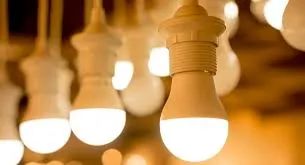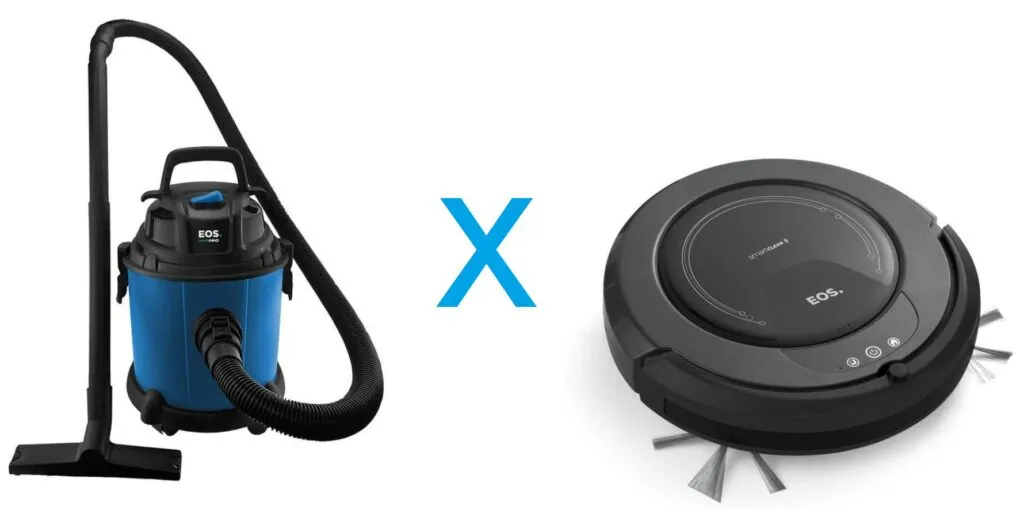Fan or Air Conditioner: Which Is Worth It? Everything You Need to Know
Discover which cooling option is more economical, efficient, and suitable for your home. Compare energy consumption, costs, and benefits of each option to make the best decision.
Summer heat is here and you're wondering whether to invest in a fan or go straight for air conditioning? This is one of the most common questions I get, especially when temperatures start rising and the electricity bill becomes a real concern.
The truth is, there's no one-size-fits-all answer. Each option has its pros and cons, and the ideal choice depends on your budget, room size, your region's climate, and of course, how much you're willing to pay on your monthly electric bill.
In this comprehensive guide, I'll show you exactly when each appliance is worth it, how much energy each one consumes, the costs involved, and practical tips to save money with whichever option you choose. By the end, you'll have all the information needed to make the smartest decision for your situation.
Table of Contents
- How Each Equipment Works
- Energy Consumption: The Big Difference
- Initial and Maintenance Cost Comparison
- When to Choose a Fan
- When to Invest in Air Conditioning
- Money-Saving Tips for Both Options
- Recommended Models for Each Situation
- Conclusion: What's the Best Choice
How Each Equipment Works
Before comparing costs and efficiency, it's important to understand how each appliance works, because this explains their differences in consumption and results.
The Fan: Air Circulation
A fan is a relatively simple device. It has a motor that converts electrical energy into rotational movement of the blades, creating a directed airflow. The main function is to move the air already present in the room, creating a cooling sensation through sweat evaporation on the skin.
There are several types of fans:
- Desktop: compact, ideal for personal use (40-60W)
- Tower: greater reach, good for small rooms (60-80W)
- Wall-mounted: fixed, good air distribution (100-135W)
- Ceiling: greater coverage, ideal for entire rooms (130-150W)
The key point here is that fans don't change the room temperature. They only create a more pleasant thermal sensation, but the air remains at the same temperature.
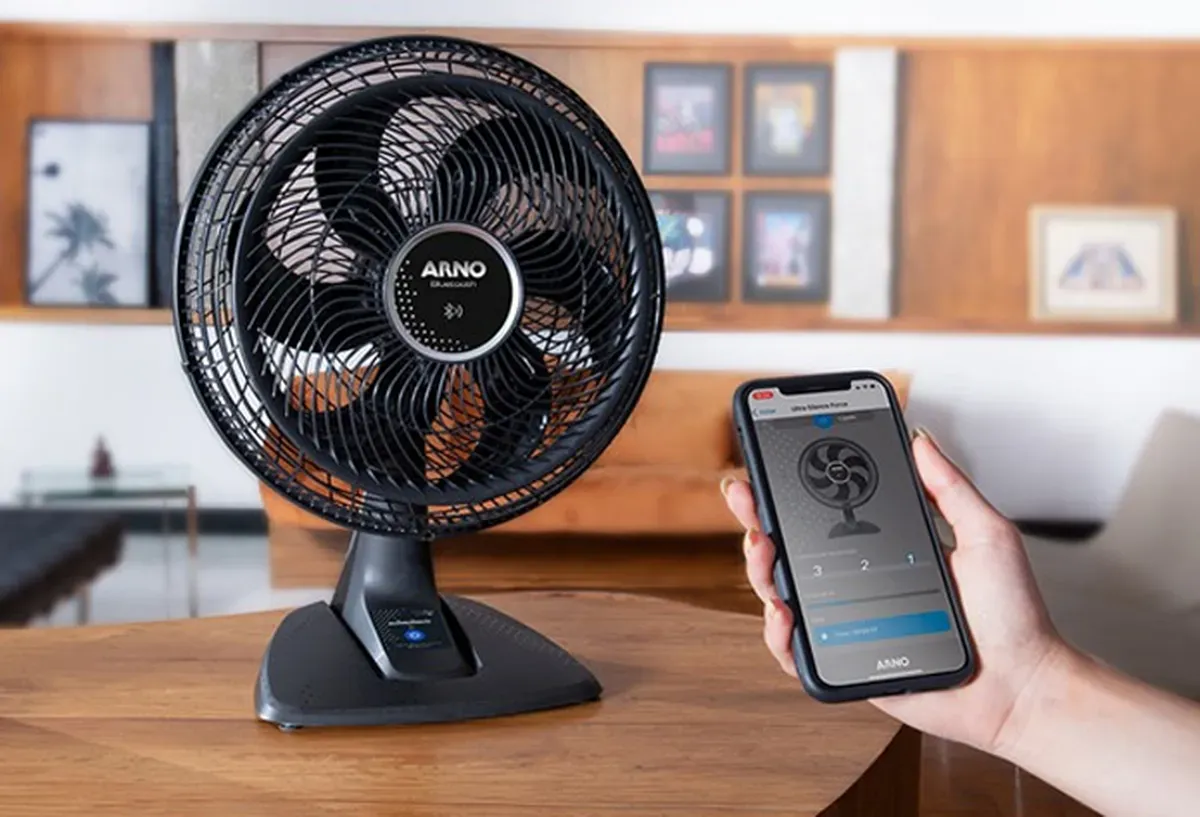
Air Conditioning: Real Temperature Control
Air conditioning works through a more complex refrigeration system. It sucks warm air from the room, passes this air through a refrigerant gas in liquid state (which absorbs the heat), and returns the already cooled air to the room.
The big difference is that air conditioning actually changes the room temperature, being able to lower it by 10°F, 15°F or more, depending on the power and external conditions.
The main types are:
- Window: single unit, cheaper (7,500-12,000 BTUs)
- Split: two units (indoor and outdoor), quieter
- Inverter: technology that automatically adjusts power, more economical
- Portable: no installation needed, but less efficient
Energy Consumption: The Big Difference
Here's the point that most impacts your wallet: air conditioners consume 6 to 10 times more energy than fans. Let me show you the real numbers so you can understand better.
Fan Consumption
| Fan Type | Power | Monthly Cost* |
|---|---|---|
| Desktop Fan | 50W | $7.50 |
| Tower Fan | 80W | $12.00 |
| Wall Fan | 135W | $20.25 |
| Ceiling Fan | 150W | $22.50 |
Air Conditioner Consumption
| AC Capacity | Power | Monthly Cost* |
|---|---|---|
| 9,000 BTUs | 800W | $120.00 |
| 12,000 BTUs | 1,100W | $165.00 |
| 18,000 BTUs | 1,600W | $240.00 |
*Considering 5 hours of daily use and average rate of $0.15 per kWh
The difference is striking. A ceiling fan consumes approximately $22.50 per month, while a 9,000 BTU air conditioner consumes over $120. That represents a difference of nearly $100 monthly on the electric bill.
But here's the catch: you need to consider whether the fan actually solves your problem. If you need to lower the room temperature, the fan might not be enough, and you'll end up suffering from the heat even while spending energy on it.
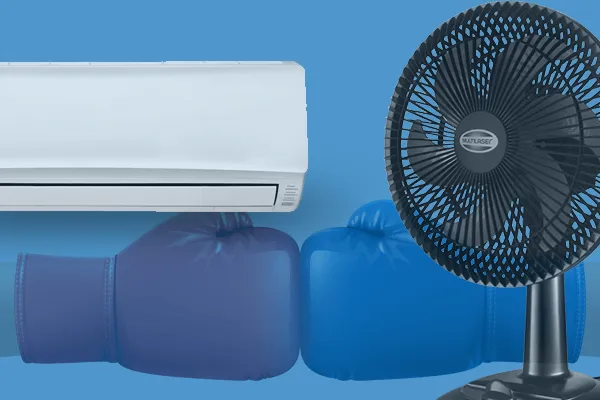
Initial and Maintenance Cost Comparison
Besides monthly consumption, you need to consider the initial investment and maintenance costs for each appliance.
Initial Costs
Fans:
- Desktop: $25 to $100
- Tower: $50 to $200
- Wall: $40 to $150
- Ceiling: $75 to $300
Air Conditioners:
- 9,000 BTUs: $800 to $1,500
- 12,000 BTUs: $1,000 to $1,800
- 18,000 BTUs: $1,300 to $2,500
Plus installation: $150 to $400 for air conditioners (ceiling fans cost about $100 to install)
Maintenance Costs
Fans: practically zero. Monthly cleaning of blades with a damp cloth works. Eventually, you might need to replace bearings ($15-25) or motor ($40-75), but that takes years.
Air Conditioners: preventive maintenance every 6 months ($80-150), monthly filter cleaning, and eventual refrigerant recharge ($150-300). Repairs can cost between $200-600.
Doing the math, air conditioning costs 5 to 10 times more to acquire and maintain compared to fans.
When to Choose a Fan
A fan is the smartest choice in some specific situations:
1. Limited Budget
If you have little money to invest, a quality desktop or tower fan can be an excellent option to start with. For less than $100, you already get significant heat relief.
2. Well-Ventilated Rooms
In homes with large windows, good air circulation, and not-too-enclosed environments, a good fan can be sufficient to create the necessary thermal comfort.
3. Moderate Temperatures
When temperatures don't go much above 85°F, the combination of air circulation with the body's natural evapotranspiration can be sufficient for comfort.
4. Sporadic Use
For those moments when you need quick relief but don't stay in the room for long, a fan is ideal.
5. Environmental Concern
If sustainability is a priority, fans consume much less energy and don't use refrigerant gases that can impact the environment.
When to Invest in Air Conditioning
There are situations where air conditioning isn't luxury, it's necessity:
1. Extreme Heat
When temperatures consistently exceed 95°F, or in very hot and dry regions, just a fan can't provide adequate comfort.
2. Enclosed Spaces
Offices, bedrooms without windows, or rooms with little natural ventilation need air conditioning to properly renew and cool the air.
3. Health Issues
People with respiratory problems, elderly folks, babies, or those who have difficulty regulating body temperature benefit greatly from the precise temperature control that air conditioning offers.
4. Work or Study Requiring Focus
Excessive heat impairs concentration and productivity. Quality air conditioning can be an investment that pays for itself through improved quality of life and productivity.
5. Property Value
Installed air conditioning adds value to the property, especially in hot regions.
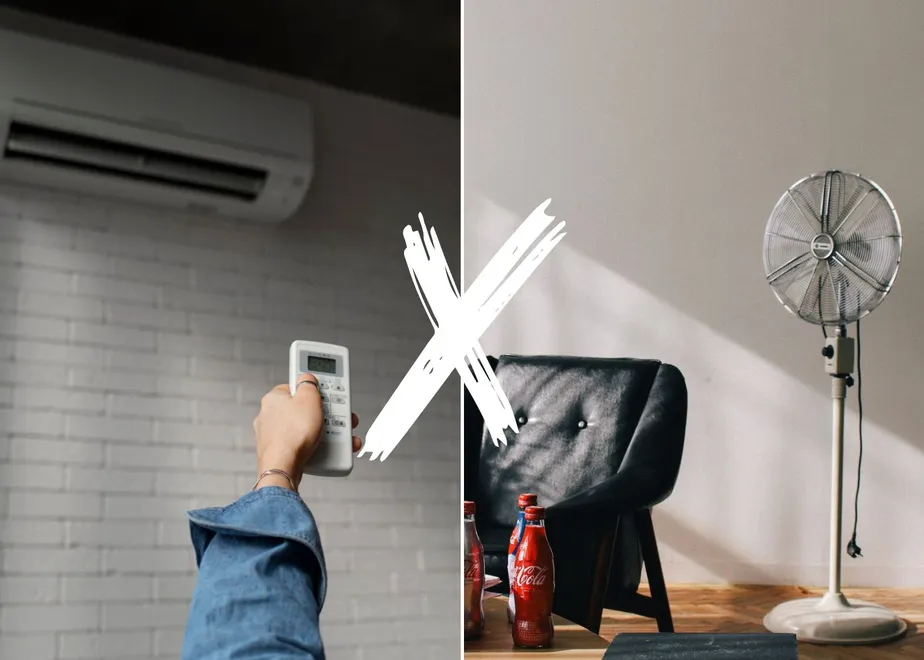
Money-Saving Tips for Both Options
Regardless of your choice, there are ways to optimize consumption and reduce costs:
Saving with Fans
Use the correct direction: ceiling fans should rotate counterclockwise in summer, pushing air down and creating a refreshing breeze.
Regular cleaning: dirty blades reduce efficiency. Clean monthly with a damp cloth.
Strategic positioning: place fans near windows to create air currents that help renew the room's air.
Efficient models: fans with DC motors consume up to 70% less energy than conventional ones.
Saving with Air Conditioning
Ideal temperature: set between 72°F and 76°F. Each degree lower represents 8% more consumption.
SLEEP/ECO function: use these functions during the night to save up to 30% on energy.
Filter cleaning: dirty filters make the unit work harder. Clean monthly.
Thermal insulation: blackout curtains, door and window sealing make all the difference.
Smart combination: use a ceiling fan along with air conditioning. This allows you to set the AC at a higher temperature (78°F-80°F) while maintaining comfort.
The Perfect Combination
A strategy many people don't know about is using both appliances together. A quality wall or ceiling fan working alongside air conditioning allows you to set the thermostat at a higher temperature, saving significant energy.
For more tips on saving energy at home, check out our complete guide on how to save electricity at home.
Recommended Models for Each Situation
Based on my experience testing different equipment, here are my recommendations:
For Those Starting with a Fan
Small room: Quality desktop or tower fan - excellent cost-benefit for offices and small bedrooms.
Living room: Tower or ceiling fan - adequate power and design that doesn't interfere with decoration.
For Those Going for Air Conditioning
Cost-benefit: Look for 9,000-12,000 BTU units with inverter technology - good energy efficiency and reasonable price.
Best technology: High-efficiency inverter models - excellent energy savings and smart features.
Premium option: Smart AC units with Wi-Fi control - remote control via app and technology that adapts to the environment.
Important Considerations in Choice
Before deciding, also consider aspects like:
Room size: to calculate necessary BTUs, use the basic formula of 20-25 BTUs per square foot.
Daily usage: if you use the room more than 6 hours daily, inverter air conditioning compensates for the initial investment.
Electrical structure: air conditioners require dedicated circuits and may need electrical installation upgrades.
If you're considering other home appliances, also see our recommendations for best smart TVs and tips about appliance energy consumption.
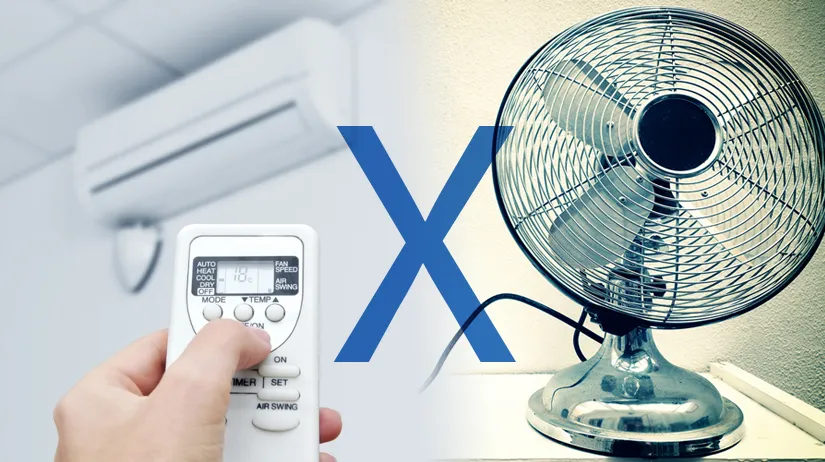
Conclusion: What's the Best Choice
After analyzing all aspects, the answer to "fan or air conditioning" depends heavily on your specific situation:
Choose a fan if:
- Your budget is limited (less than $200 to invest)
- Temperatures in your region rarely exceed 90°F
- You use the room few hours per day
- Sustainability is a priority
- The room has good natural ventilation
Choose air conditioning if:
- You have budget for initial investment ($1,000+)
- Temperatures frequently exceed 95°F
- You spend many hours in the room
- Productivity and comfort are priorities
- The room is enclosed or has little ventilation
The smartest strategy: start with a quality fan and, if necessary, upgrade to air conditioning. Often, the combination of both appliances offers the best cost-benefit.
Remember that whatever choice you make, techniques like thermal insulation, conscious use, and proper maintenance will make a significant difference in both comfort and energy bills.
For those interested in other home cooling solutions, check out our guides on LED lighting for energy savings and solar energy benefits.
What will you choose? Keep following our tips to make your home more comfortable and economical!
